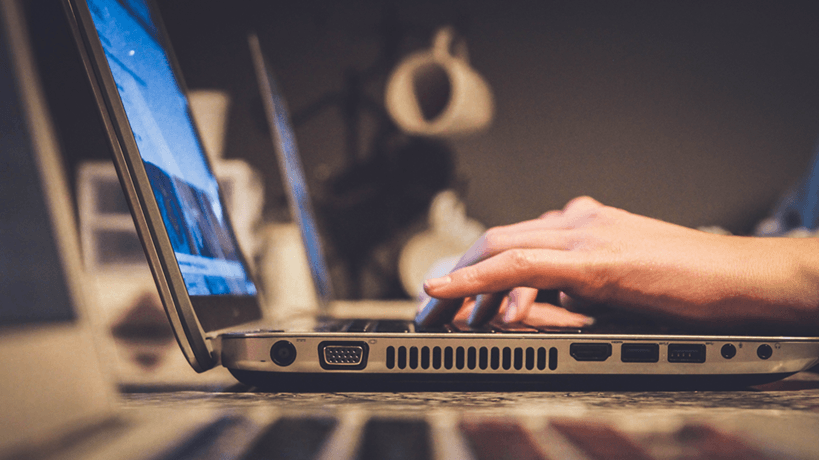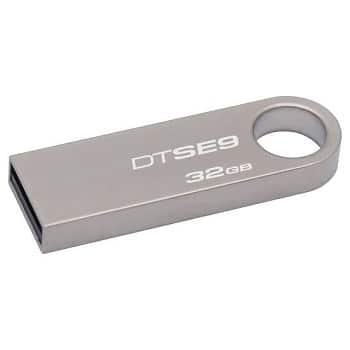There may come a time when your Windows 10-powered machine will just not recognise a USB device. This issue has existed on Windows since the days of Windows 98, and sadly, Windows 10 also seems to have inherited the quirk. Thankfully it isn’t difficult to make your device detect your USB device. Follow the below-mentioned methods to see if your computer gains senses and stars detecting your device.
Restart
As Moss and Roy famously put it in The IT Crowd TV show, a simple restart can do wonders for you. So plug out the device, reboot the computer and plug it back in to see if anything changes.
Driver Issue
Sometimes your USB device, which is plug-and-play nature really need a set of codes, in this case known as a driver, to interact with your device. If the computer prompts you to install a driver, let it try. If it doesn’t, go to Control Panel > Printers and devices to see if there is any Unidentified USB device or Unknown device listed there. In case there is, go to its Properties and update its driver. You might again need to reboot the machine, Alternatively, you might want to visit USB device’s manufacturer website to get a driver for it.
Plug-out all other USB devices
If your newly inserted device isn’t getting read by the computer, try disconnecting other USB devices to see if anything helps. Sometimes having multiple devices on the machine may create a conflict.
Select “Let me pick from a list of device drivers on my computer.“ 8. Next, select USB Mass Storage Device and click Next. Note: Make sure Show compatible hardware is checked. Click close and also close the Device Manager. Reboot to apply your changes and this may be able to Fix USB Device Not Working in Windows 10. Upon a successful handshake, the device sends Windows its device descriptor. Windows uses the device descriptor to id the device and search for a driver. If the handshake fails or windows can't receive the descriptor for any other reason, windows can't recognize it and it's 'Unknown' Hi @spunk.
Fix USB Root Hub
If the aforementioned methods still don’t make your device recognisable, you could try opening Device Manager, expanding USB Serial Bus controllers. Once there, right click on USB Root Hub and click Properties. Click on the Power Management tab and uncheck the option that says “Allow the computer to turn off this device to save power”. If there are more than one USB Root Hub listed, you will need to perform the same with every entry. Click OK and restart your computer. Plug back the USB device in and see if the computer is able to recognise it.
Try a different computer / operating system
If your USB device is still not showing up on the system, you might want to try it on any other device, and also check if it works on any other operating system. In case it does, transfer all your important files onto a different device. In case it doesn’t, we’re afraid your USB device has probably gone rogue.
The cases of USB devices not working in Windows 10 is more commonly reported after a Windows update. However, this problem can occur at any other time and you will find below the steps to fix the problem of USB Device Not Working in Windows 10.
USB Device Not Working in Windows 10
The problem of USB Device not working in Windows 10 might be related to various issues, ranging from outdated device drivers and power management settings to USB devices not loading or inconsistently loading on a Windows computer.
Before going ahead with the steps to fix USB Device Not working issue in Windows 10, it is a good idea to rule out the possibility of the USB device itself being faulty.
Remove the USB device from your computer and plug it into another computer and see if it works. If it works, the device is OK and you can follow the steps below to fix the problem on your computer.
1. Power Flush Computer
The problem of USB devices not working in Windows 10 could be due to minor software glitches or stuck programs and processes.
1. Power OFF your computer by pressing the Power button.
2. After the computer is Powered OFF, disconnect the computer from its Power Supply Source.
3. Wait for 5 minutes and Restart the computer
2. Uninstall Faulty Device Driver
1. Right-click on Start button and then click on Device Manager.
2. On the Device Manager screen, expand the entry for Universal Serial Bus Controllers > right-click on the Unknown Device and click on Uninstall Device option.
3. On the confirmation pop-up, click on OK to confirm.
4. Repeat the above steps for other affected devices (if any) and Restart your computer.
Once your computer restarts, Windows 10 will automatically load the right drivers as required.
3. Change Power Management Setting For USB Root Hub
In order to save power, Windows 10 has a tendency to turn-off power supply for unused USB ports and this can cause the problem of USB device not working in Windows 10.
Drivers Not Installed Code 28
1. Right-Click on Start button and click on Device Manager option.

2. On the device Manager Screen, right-click on USB Root Hub and click on Properties.
3. On the Properties screen, click on Power Management tab and uncheck the option for “Allow the computer to turn off this device to save power” and click on OK.
4. Repeat the above steps for other USB Root Hubs (If any) and Restart your computer.
4. Disable Fast Startup

While the Fast Startup feature in Windows 10 helps the computer to start in no time (YES! faster than Mac), this feature can sometimes end up not loading USB devices or loading them inconsistently (ON and OFF).
Unknown Usb Device Error
If you are noticing that sometimes USB devices work and sometimes do not, disabling fast startup can fix the problem on your computer
1. Open Settings > click on System icon.
2. On the System screen, click on Power & Sleep in the left pane. In the right-pane, scroll down and on Additional Power Settings Link.
2. On the Power Options Screen, click on Choose What the Power Buttons Do link.
Repair Usb Drivers Windows 10
3. On the next screen, scroll down to “Shutdown Settings” and uncheck Turn on fast startup option.
4. Click on Save Changes button.
Now, restart your computer and see if the USB device is now working on your computer.
5. Check For Updates
See if an Update is available for your computer. If an update is available, Windows will also install the latest available drivers for USB Ports on your computer.
1. Click on the Start button > Settings Icon > Updates & Security.
2. On the Update and Security screen, click on Windows Update in the left pane and then click on Check For Updates button.
3. Allow Windows to check for available updates and install them onto your computer
In case updates are available, the latest available device drivers will also be installed on your computer.
6. Disable USB Selective Suspend Setting
By default, Windows computer is set to conserve power by suspending power supply to external USB devices, whenever they are inactive.
However, this power saving setting can sometimes cause problems like Error Code 43 and USB Device Not Recognized Error in Windows 10.
1. Go to Settings > System > Power & Sleep, scroll down and click on Additional Power Settings Link.
2. On Power Options screen, click on Change Plan Settings link located next to the current Power Plan.
5. Next, click on Change Advanced Power Settings link.
6. On the next screen, click on USB Settings > USB selective suspend setting and select disabled option for “Plugged In” and also for “On Battery” in case you are using a Laptop.
7. Click on OK to save above settings.
